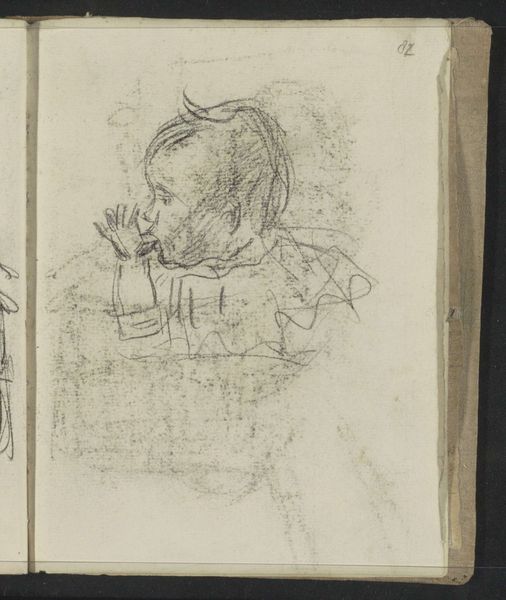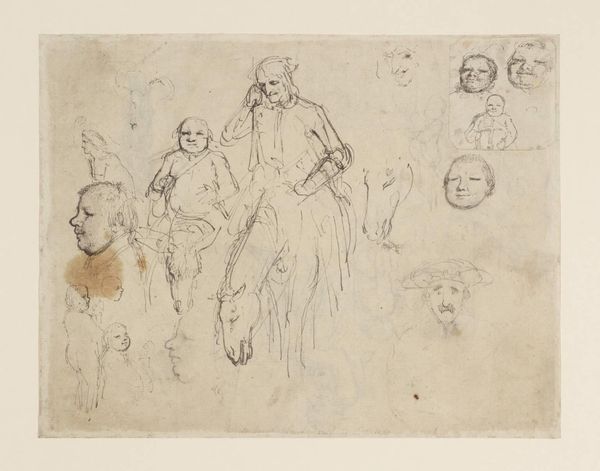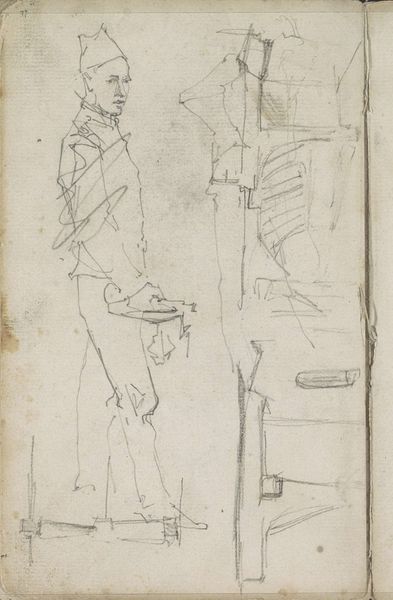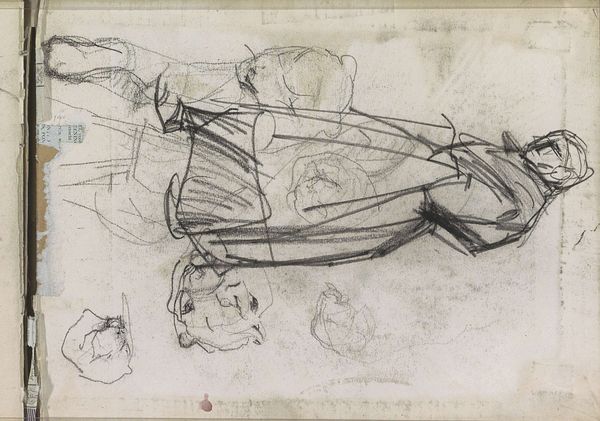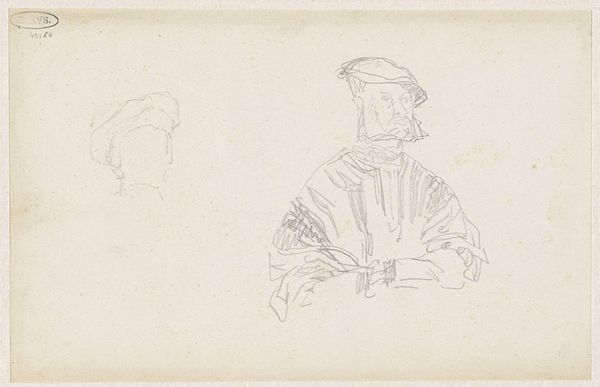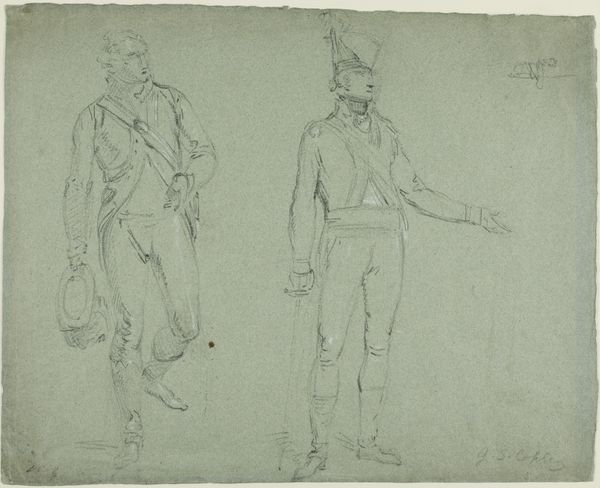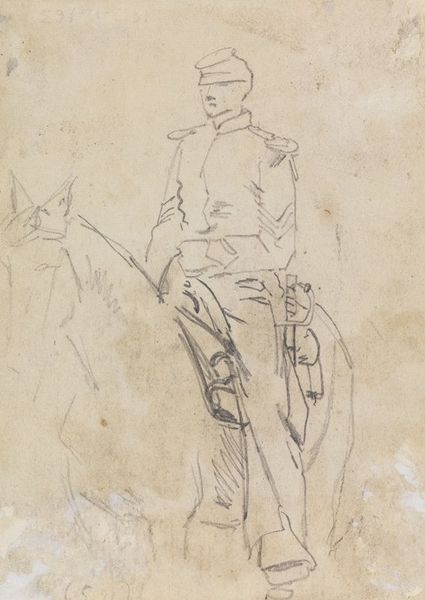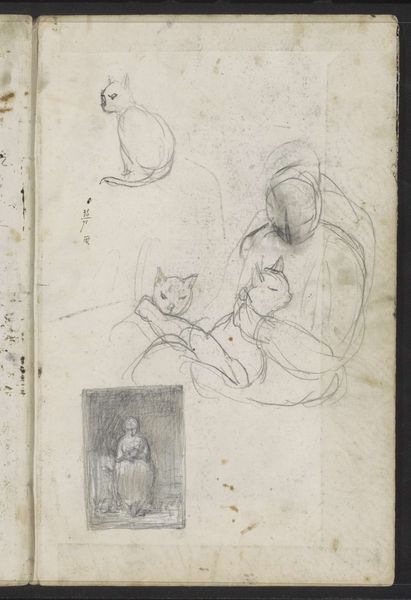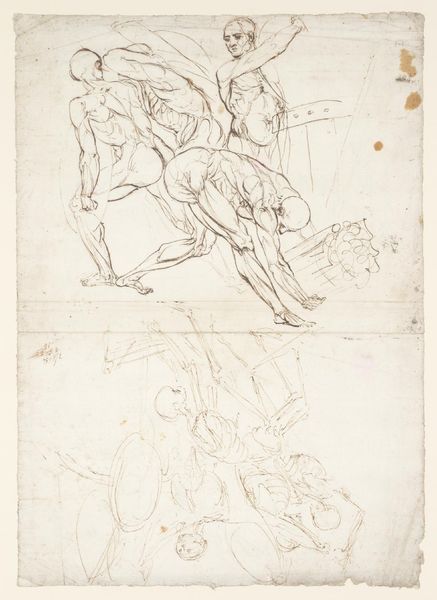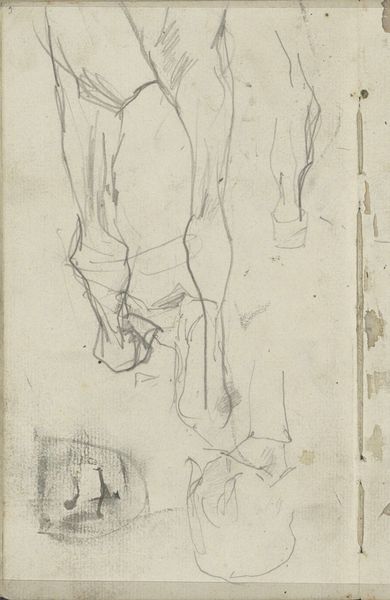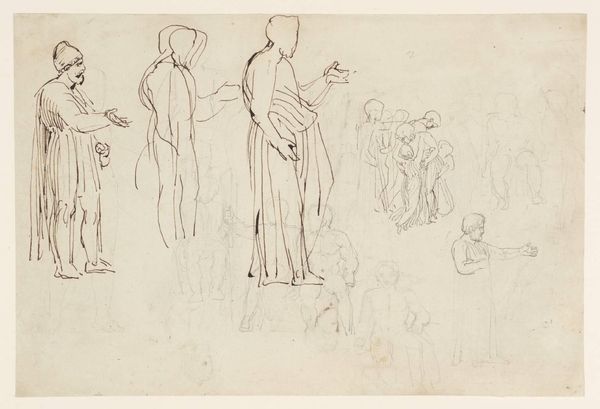
Self-Portrait and Anatomical Studies. Verso: Two Male Anatomical Studies 1783
0:00
0:00
Dimensions: support: 250 x 370 mm
Copyright: CC-BY-NC-ND 4.0 DEED, Photo: Tate
Editor: This is Henry Fuseli's "Self-Portrait and Anatomical Studies" from around the late 18th century, a sketch on paper. It feels like a glimpse into the artist's working process, almost utilitarian in its rawness. What strikes you about it? Curator: The rapid, almost frantic marks reveal a mind grappling with form, both the artist's own and that of the idealized body. It's a study, yes, but also a site of production, where ideas about art-making are actively being worked through via material engagement with the page and the subject. How does the verso speak to this? Editor: I see those additional anatomical studies as further explorations of the body as a material object. It makes me think about Fuseli's access to anatomical knowledge and the labor involved in creating these studies. Curator: Precisely. The means of artistic production, the labor of drawing, and the material realities of the body become intertwined, challenging traditional notions of artistic genius. Has this changed how you perceive it? Editor: Definitely. I now see it as less of a finished piece and more as a document of artistic labor and intellectual pursuit.
Comments
tate 8 months ago
⋮
http://www.tate.org.uk/art/artworks/fuseli-self-portrait-and-anatomical-studies-verso-two-male-anatomical-studies-t08242
Join the conversation
Join millions of artists and users on Artera today and experience the ultimate creative platform.
tate 8 months ago
⋮
Fuseli was known for his delicate pencil drawings. Most of his drawings are self-portraits and anatomical studies. He believed 'You ought to see distinctly the true image of what you are trying to draw'. This is a working drawing, using simple pen line to capture form. On the front and back of the paper are small unfinished chalk and pencil figure sketches. Gallery label, August 2004


